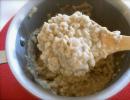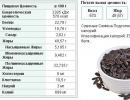Useful properties of parsley, composition and contraindications
The first plant that we see in the garden beds in early spring is fresh curly parsley leaves, which declare themselves with a delicious spicy aroma in the air.
It has a number of properties that are used to maintain health, to give dishes a special taste and to restore beauty. Today in the article we will consider: the beneficial properties of parsley.
Earlier, in the ancient Greek civilization, the Greeks considered this plant sacred, saving from diseases and ailments. Greens were woven into wreaths, which were awarded to the winners of ancient battles and competitions, or presented to honored guests and rulers. In our area, parsley root gained popularity in the 11th century, when the importance of this plant was appreciated. Now, fresh parsley is grown everywhere.
In the summer, parsley is used in salads and dishes. Parsley root and leaves provide a fresh, spicy flavor and an unusual ease of pairing with other ingredients. Without this spice, the salad seems depleted, since vitamins, when consumed, bring only positive emotions and a feeling of fullness.
For example, curly parsley prevents the spread of negative and depressive mood, parsley stalks help to remove bad smell from the mouth.
The prevailing presence of vitamin C, which is 4 times higher than its amount in lemon, prevents the formation of diseases associated with its deficiency in the human body. At special moments, the leaves of this spice help in maintaining health and saturating the body with essential substances.
Useful properties of parsley
Description of the plant. The spicy herb is a biennial plant, in the second year it grows up to 100 cm, has a straight stem, rather branched, on which the leaves are triangular in shape, with a double pinnate dissection.
It blooms in the second year after planting, with small greenish-yellow flowers that form a basket inflorescence. At the end of flowering forms oblong-ovoid seeds. The plant is classified as a member of the Umbelliferae family and belongs to the genus of the same name - Parsley (Petroselinum). 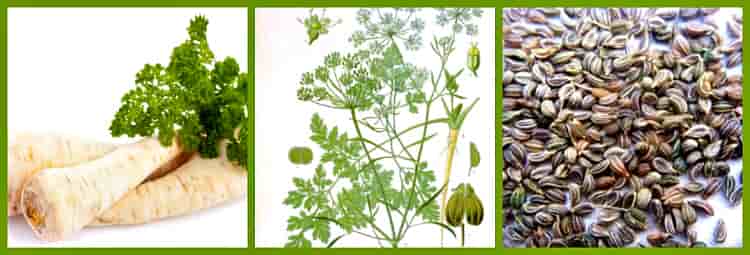
The spice is distributed throughout Europe, except for the territory of Scandinavia. It is grown in Canadian, American lands. In addition to these territories, the plant is bred in the lands of Asia, Siberia, and in the Far East.
On the chemical composition and nutritional value of spices
Parsley is useful in any form - be it root, stem or leaves. The whole plant stores such a huge amount of the most important substances for human life that their properties have not yet been fully studied. What vitamins and in what part of the plant are:
Leaves saturated with a large amount of iron, vitamins and microelements, active biological substances and essential oils. The average amount of Fe is 5.5 mg per plant.
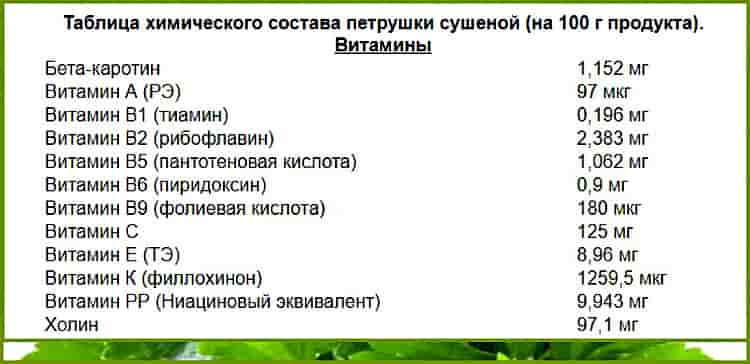
Petroselinum is superior in vitamins to certain vegetables and fruits. The leaves are especially distinguished by the amount of vitamin C (up to 0.2%), they contain carotene and thiamine, nicotinic acid and retinol, riboflavin. From mineral salts, iron and potassium, phosphorus and calcium, magnesium are released. There are proteins and pectin substances and carbohydrates.
Root. Useful properties of the root part of parsley are no less than the leaf. The root contains a large amount of carotene, which makes parsley as useful as carrots.

Essential oils, saccharides, amino acids, dietary fiber, starch, vitamins and minerals all help improve health and cleanse the toxic waste we receive from the outside world.
In seeds a lot of oil, which is 22% of the total mass. It consists of acids: oleic, linoleic, petroselinic, palmitic. There are glycosides, furocoumarins.
in flowers found kaempferol, quercetin, in the roots - apigenin and mucus.
All organs of the plant somehow contain essential oils, which give it a pleasant spicy aroma. Since the spicy plant is quite popular and often found in the kitchen, it is a godsend for health support.
Useful properties and contraindications
It is the composition of the plant that determines the beneficial properties and contraindications of parsley. It perfectly heals the body, saturating it with minerals and vitamins.
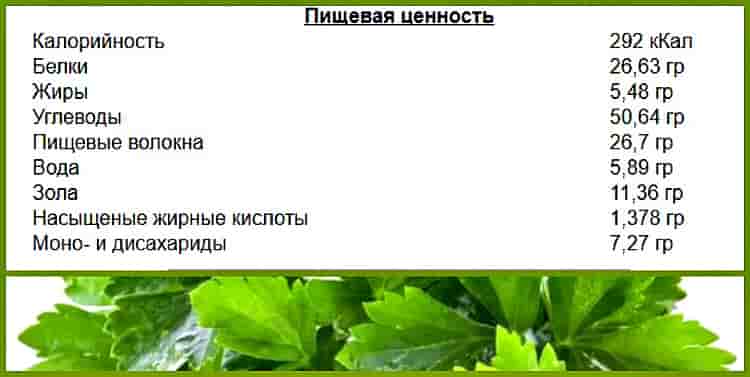
The medicinal properties of leaves, roots and stems have been known since ancient times. The plant helps a person overcome the state of depression and despondency, cleanses the body and has a positive effect. Inclusion of plant leaves in the diet:
- Improves eyesight - vitamin A contributes to this.
- Helps build proteins - from the resulting amino acids; very useful in this case for vegetarians who have a deficiency of this component.
- Helps to strengthen and whiten teeth;
- Rejuvenates the body, slows down aging, thanks to folic acid, which is part of it, as well as vitamins A, E, C.
- It also helps to strengthen the immune system and the walls of blood vessels;
- Accelerates metabolic processes, thereby reducing excess weight;
It has been proven that the systematic use of parsley roots prevents the development of many diseases of the lungs and intestines. Promotes:
- strengthening vision, immunity and the skeletal system of the body;
- improvement of appetite, digestion;
- relaxation of the body, muscles, stress relief;
- cleansing the organs and systems of the body from harmful substances, toxins and toxins;
- reduces the exacerbation of gout;
The main aspects of greenery and its effect on the body:
As a food, greens are a source of many vitamins, as mentioned above, however, they are able to accommodate the minimum amount of fat and protein, 0.8 and 2.5 grams, respectively. The nutritional value of the plant is small, only 36 kcal. However, being a receptacle for elements such as copper, selenium and magnesium, it prevents diseases of the heart, blood vessels and nervous system, benefiting the immune system and the body as a whole.
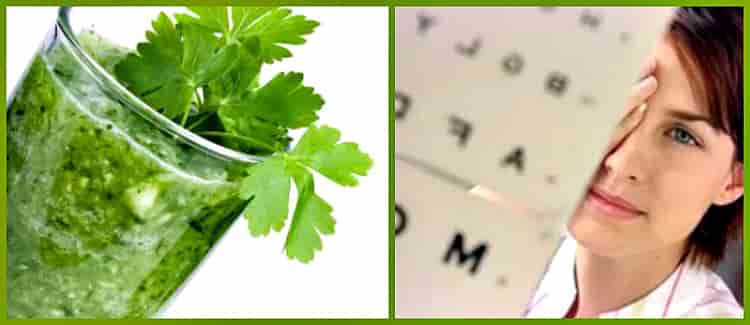
Like any plant, parsley leaves are rich in chlorophyll. This substance, without which the process of photosynthesis does not occur, when it enters the body, it can cleanse the blood of excess harmful factors, reduces sugar levels (which is a positive thing for diabetics) and also has a tonic effect.
Greens help people who complain of aching joint pain. Since parsley contains eugenol (an essential oil), it also has an anti-inflammatory effect, useful for rheumatism and arthritis. The oil itself has an antiseptic and analgesic effect.
The human body is able to accumulate many substances that enter it and are not excreted. Sometimes such substances can poison it or slow down certain biochemical and physical processes.
The spicy herb includes the flavonoid luteolin, which has the ability to prevent oxidative processes inside the cell and allows you to remove free radicals. Instead, it enhances carbohydrate metabolism and is a fairly strong anoxidant with an anti-inflammatory effect.
The plant is able to reduce the acidity of gastric juice and in some cases prevents the occurrence of heartburn and ulcers.
Improves digestion and increases appetite. Special parsley-based tinctures are produced to have a choleretic and anti-inflammatory effect on the gastrointestinal tract.
The effect of parsley was noted in reducing inflammatory foci in the urinary tract and kidneys, reducing stone formation and urea salts.
Helps reduce the risk of pyelonephritis by inhibiting the activity of a number of bacteria and has a diuretic effect. The latter is caused by a property that increases the tone of the smooth muscles of the bladder, and brewing the roots will help reduce the accumulation of fluid in the body.
Parsley extracts affect the metabolism in the cells of the body, promptly removing toxins and harmful waste from the body. The extract is able to increase the amount of myristicin and apigenin in the liver, which enhances the filtering ability of the liver, clearing the large intestine from excess deposits.
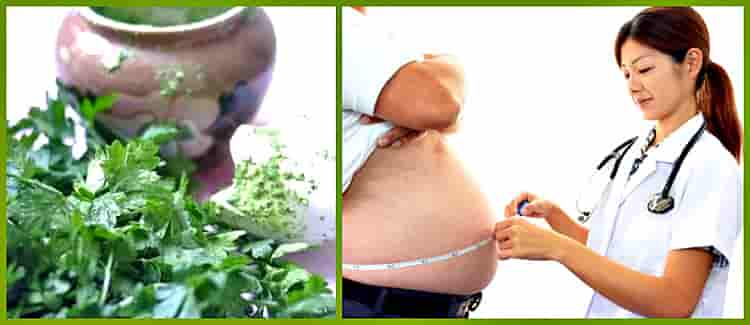
This property contributes to the active action of a number of drugs in the treatment of colon cancer. Helps satisfy hunger. This feature is important for people who want to lose weight to fight extra pounds.
Parsley acts as a source of the essential amino acid histidine, which cannot be produced in the body on its own. As a result, a person must receive it from the outside, and greens are the most valuable container of this amino acid. Histidine is able to resist a number of infections, as a result of which, by treating the wound with parsley juice, it is possible to prevent its subsequent infection.
In addition, the magical properties of parsley can help with such ailments as:
Digestive tract disorder
If the processes of digestion often disturb you, at night you need to pour a pinch of ground parsley seeds with 2 glasses of water, let it brew for 5 days and drink 1 tablespoon before each meal.
Obesity
To solve the problems of obesity, you need to prepare a special decoction from the root zone. We wash the roots, cut and cook for 15 minutes over low heat. Then we sift through the filter, and distribute into 3 servings for the whole day. Drink the decoction ten minutes before meals. It activates metabolic processes, removing excess fluid and breaks down subcutaneous fat.
Weak immunity
Another important characteristic of the plant is its effect on the immune system. This factor is influenced by the catalysts found in parsley, in the form of vitamins A and C.
They are able to influence the formation of more complex structures, for example, they take part in the synthesis of collagen - this is a protein that is part of the connective tissue. Connective tissue tends to wear out and break down due to external factors, and this vitamin inhibits these processes.
Vitamin A is an active participant in the synthesis of proteins that make up the mucous membranes and endocrine glands, which are indispensable for the protective function of the body.
Human immunity must be constantly strengthened. It can weaken in case of any disease, indigestion, lack of vitamins.
Recipe: To strengthen weakened immunity, it is necessary to grate the parsley root, pour 2 cups of hot water. Insist for 10 minutes. All this through the filter and consume all day in small portions.
Edema zones, colic in the kidneys, heartburn
Mix the squeezed juice from parsley leaves with honey and drink 2 tablespoons 4 times a day.
For the circulatory system, heart and blood vessels
To begin with, it is worth noting that the plant affects the integrity of the body and the normal activity of all vital functions. The main body fluid that allows assessing human homeostasis is blood.
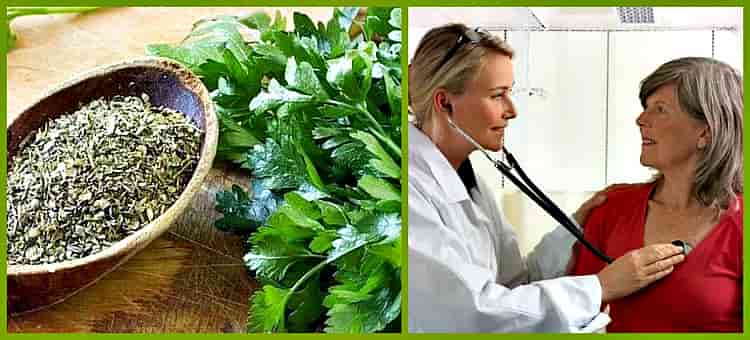
Thanks to parsley, namely the presence of folic acid, there is an active formation of red blood cells - erythrocytes, hemoglobin in the blood increases, which prevents the occurrence of anemia.
The necessary trace elements that are part of the leaves of the plant and provide significant support to the cardiovascular system are potassium and sodium. In addition, they maintain acid-base and water balance.
This means that the active consumption of parsley as a source of these elements leads to normal blood pressure, reduces the heart rate in people suffering from tachycardia. Improves metabolism.
Vitamin K contributes to the coagulation of the body if necessary, that is, thrombosis and blood clotting. Heals blood vessels, strengthening their walls and increasing elasticity.
The leaves of the plant reduce the level of hemocysteine. This amino acid is capable of causing pathological processes on the endothelium of capillaries and blood vessels, and when accumulated, it forms blood clots, which leads to atherosclerosis. The use of parsley in the diet significantly reduces the risk of the disease.
Recipe 1. You need to make an infusion of parsley. Stems parsley pour boiling water overnight. Filter and mix with linden honey. Take 1 tablespoon half an hour before meals 4 times a day.
Recipe 2 for weakened vessels. It is necessary to mix the juice of parsley and carrots in proportions of 1 to 3. Acceptance - 3 times a day.
Mosquito and insect bites
When bitten on the body, itching and discomfort occur. To get rid of them and remove abscesses, you need to grind the greens of the plant into porridge and apply in the form of an application to attach to the sore spot.
Now, with the help of these easy tips, you can cope with the first signs of diseases.
Contraindications for use
Not in all cases, plants can help. In some, due to its properties, it can only complicate the situation, and even be contraindicated. Which ones exactly:
- the use of infusions for allergies;
- use in urolithiasis;
- with cystitis;
- with sensitive skin;
- use in nephritis;
What drugs are prepared from parsley
For the purpose of prophylaxis and for the treatment of ailments, the plant is used in various forms. It is used as a seasoning for soups, salads, ready meals, and for canning vegetables. They do not make juice for the treatment of diseases of the gastrointestinal tract, vision, and reduction of inflammatory processes. Broths are brewed, infusions are prepared, dried and preserved for the winter, benefiting the body.
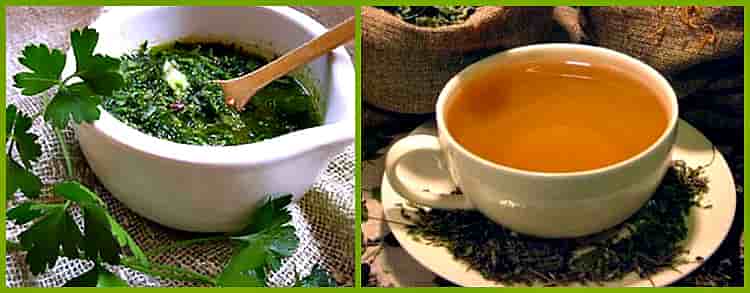
Infusion can be prepared from two teaspoons of crushed leaves, pouring them with a glass of boiling water and letting it brew for 15 minutes. Drink 30 minutes before meals, three times a day, for a month. The infusion helps:
- Regulate metabolic processes, which affects the reduction of human weight,
- affects the mental state, improving mood;
- Relieves inflammation in the oral cavity, freshens breath and strengthens the gums;
- Promotes the removal of fluid from the cells of the body, as a result of which edema disappears;
- Soothes redness, relieves itching and pain.
- Promotes long-term remission in case of gastritis or stomach ulcers.
Decoction boil for 15 minutes in a water bath, from 100 g of raw materials per liter of water. And after that, they also insist for 30-40 minutes. The broth is drunk up to 4 times a day, half a glass, the treatment is carried out up to two months. The drug exhibits medicinal properties, contributing to:
- activation of intestinal peristalsis,
- regulation of the menstrual cycle,
- relieve the feeling of hunger,
- suspension of the processes of inflammation and pain, so it is used for inflammation of the eyes, abscesses and boils, bruises and insect bites.
Medical fees. Green leaves and fruits (seeds) of the plant are used to prepare medicinal preparations, combining them with other herbs. I will give a recipe for preparing a collection for the treatment of the bladder with its inflammation: 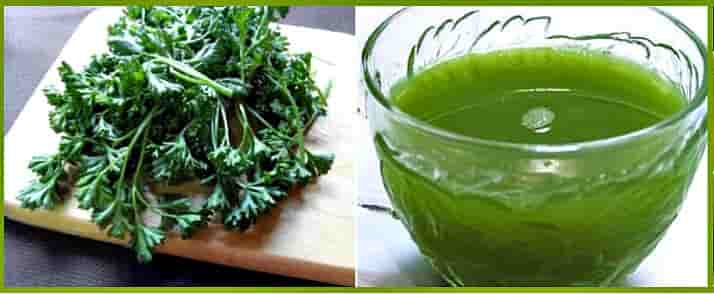
For the infusion, you will need 60 g of a bearberry leaf and 20 g of parsley seeds, which are kept for 6 hours in a glass of cold water - 10 g of this mixture. After that, it is heated in a water bath for about 15 minutes. The infusion is prepared for a day, which is divided into 4 equal parts and drunk. It must be prepared fresh every day, and so for 14 days.
How to prepare raw materials
Leaves and twigs of parsley have a long shelf life. The tops of the plant are harvested, the petiole of the leaf must be cut, about twice. Since nitrates and pesticides often accumulate in the lower part of the petiole.
Read more: in vegetables and fruits.
After a good washing of the leaves, they must be dried on a towel and chopped. And then, either pickle, or freeze, or dry.
- When salting, the greens are placed in a sterile jar, sprinkling each layer with salt.
- When frozen, they are distributed into packages and sent to the freezer.
- When drying - lay out a thin layer in a ventilated room and mix periodically, until completely dry. Then placed in a jar with a tight lid.
Salted greens can be used for cooking. And frozen and dried is suitable not only for cooking, but also for treatment and cosmetic purposes.
This spicy plant growing in our beds is able to surprise with its effective effect on the body. It is no coincidence that the beneficial properties of parsley are so widely used in traditional medicine for the treatment of various diseases. Do not forget, dear readers, to prepare this useful herb for the winter.
Stay healthy!


